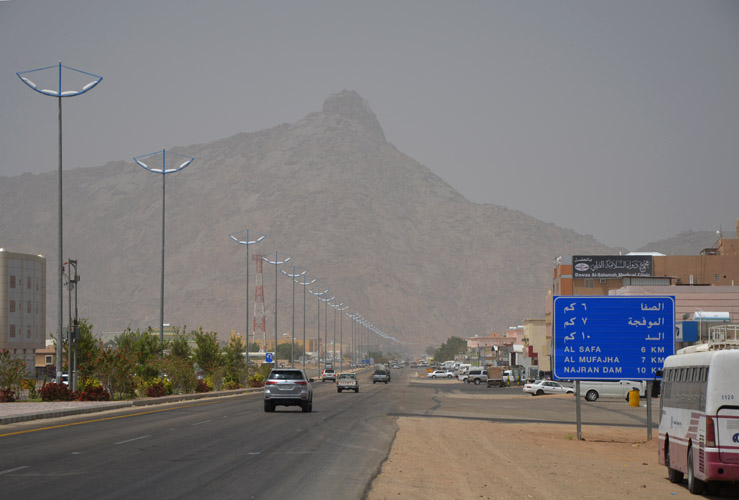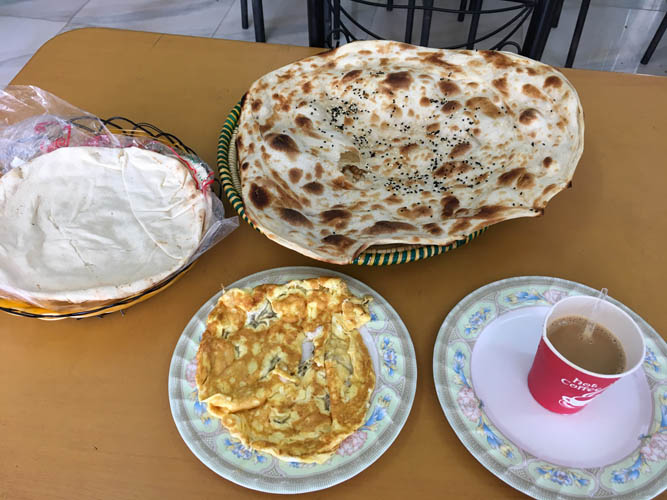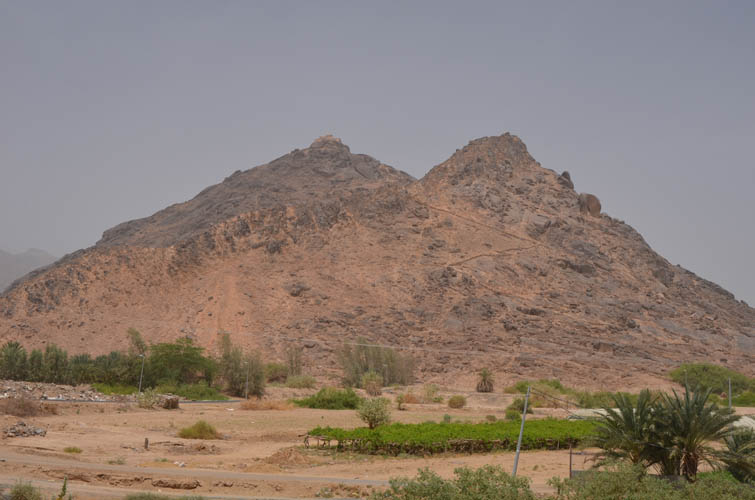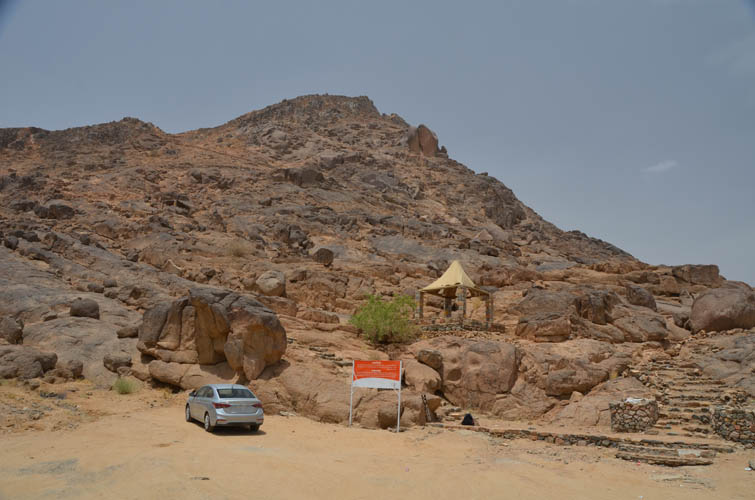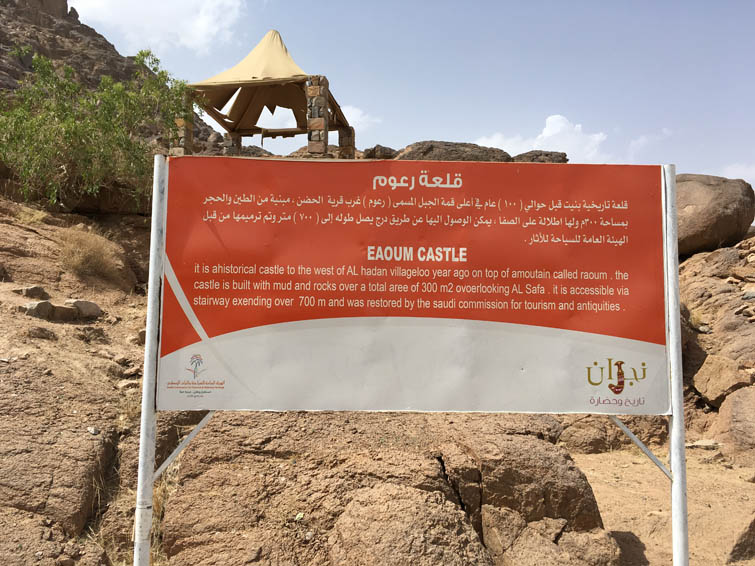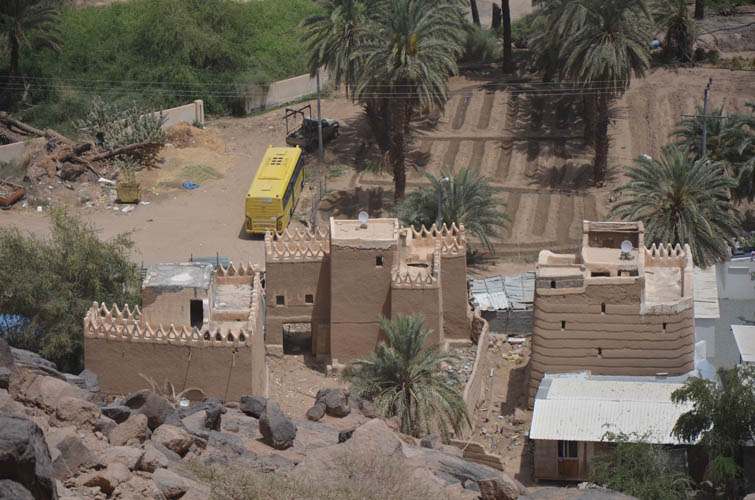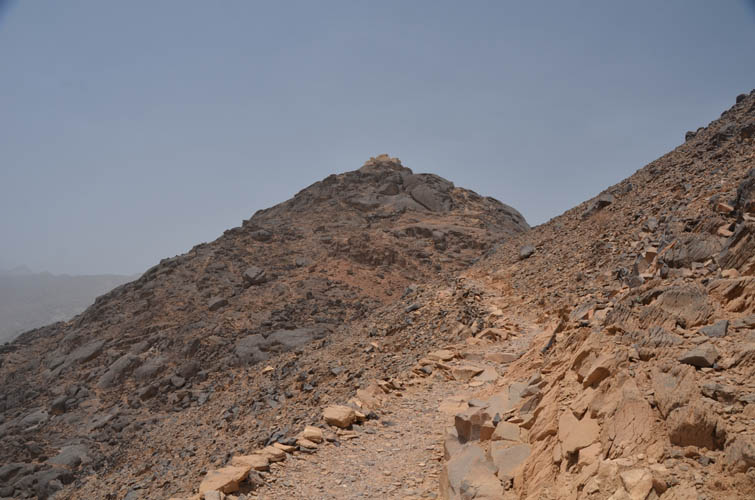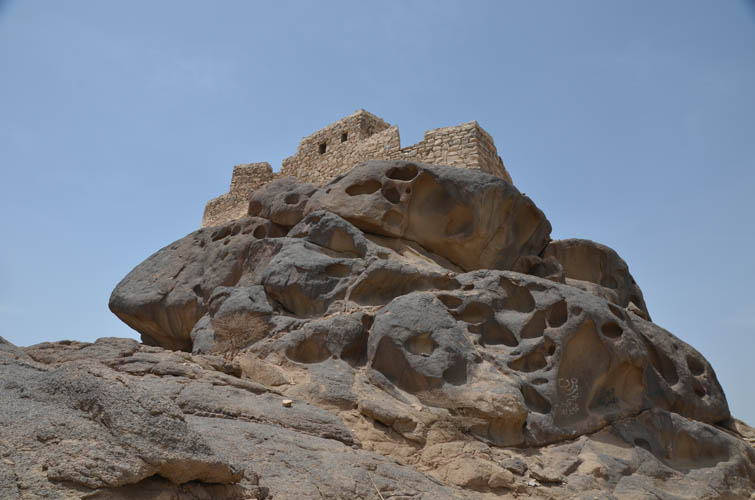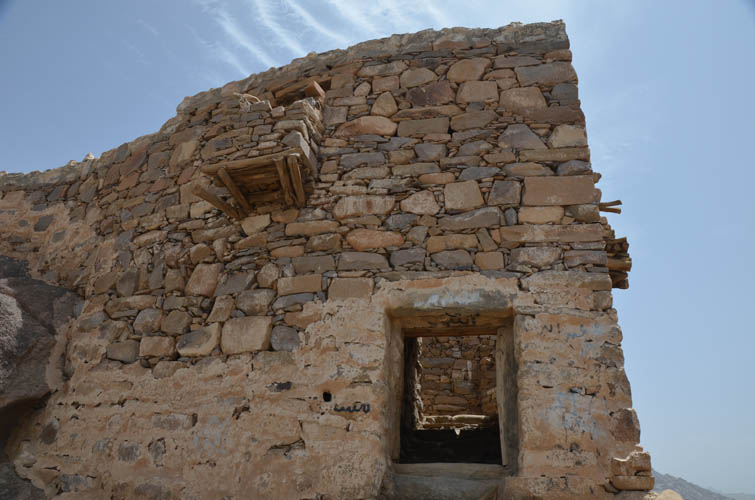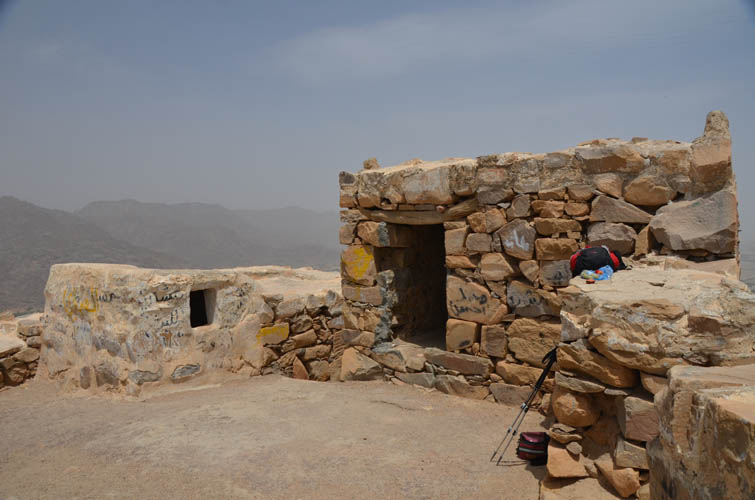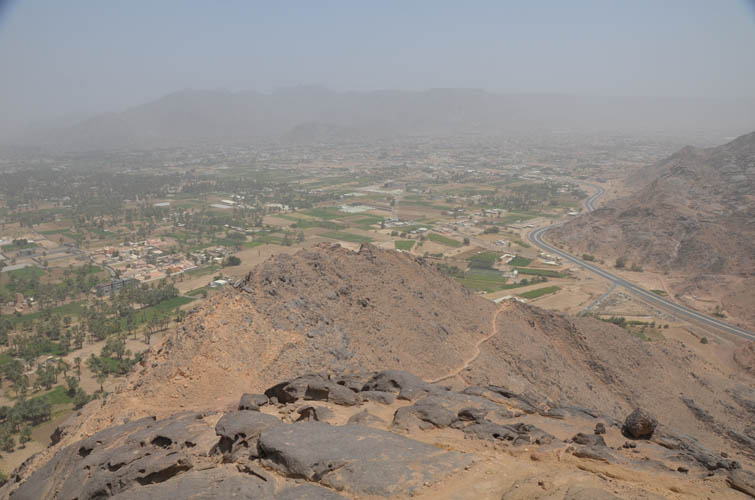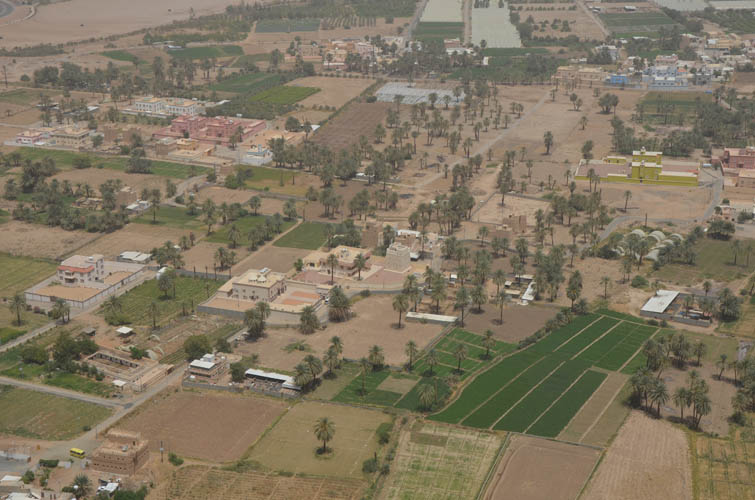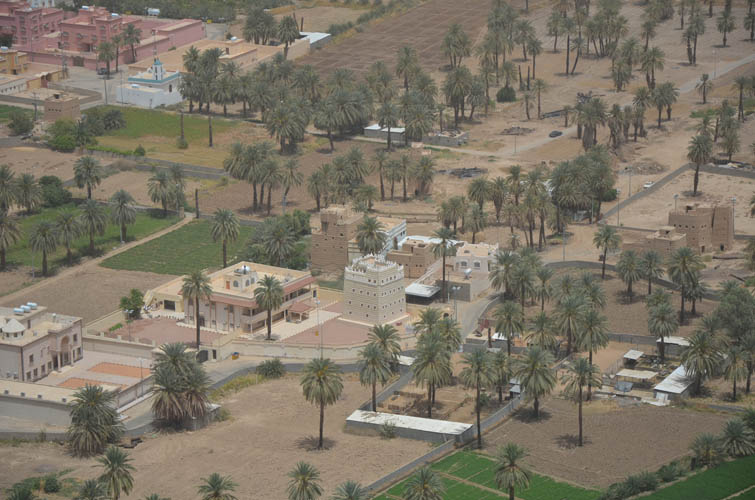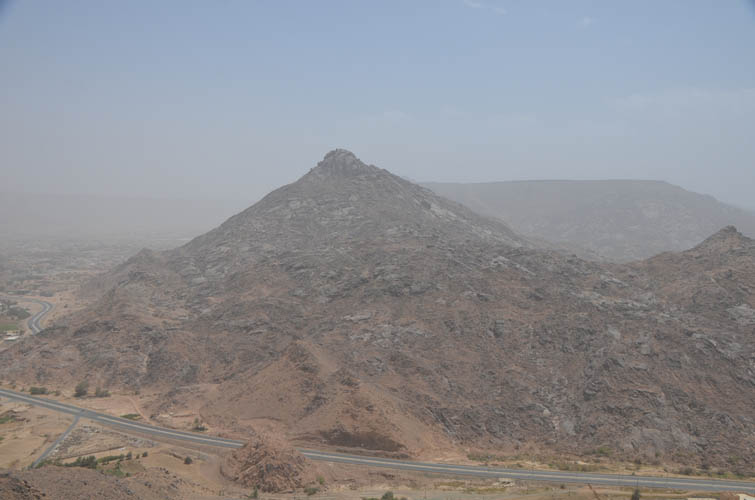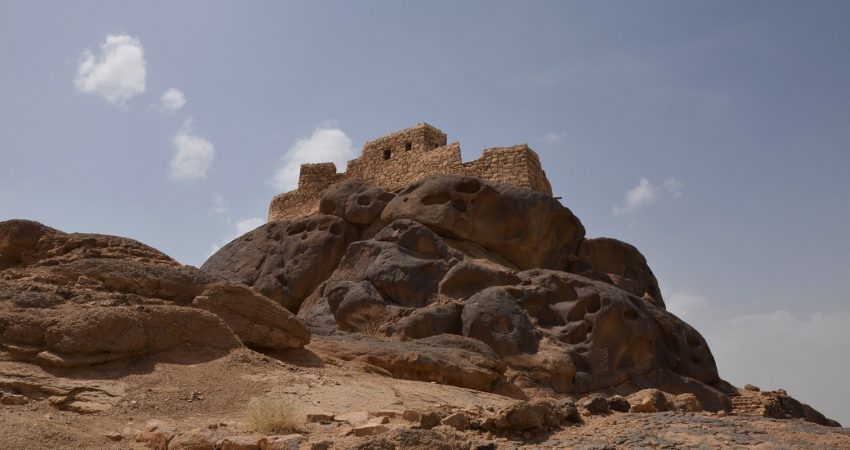Najran, Saudi Arabia
28 March 2019
Solo
Hiking under the watchful eye of the Saudi security services
My first hike in Saudi Arabia. Well, my first successful one! The success of this hike was preceded by a failed summit attempt the day before, which also allowed me to gather important information about what’s possible and what’s not in this area. Without this failed attempt, I would’ve never even known about Raoum (variant spellings: Ra’oum, Eaoum), so let me start by recounting the previous day’s adventure…
On the morning of March 27th I was only four kilometres further west struggling through nasty bouldery terrain in a vain attempt to conquer Jabal Ghar al Harith, one of the highest peaks (2050 m) in the area around the city of Najran in Saudi Arabia’s far south. Based on the general maps I had this mountain seemed close enough from the nearest village that I thought I could muddle my way up even if I didn’t find a trail, yet far enough from the Yemeni border to keep me out of any potential trouble with the Saudi military and the conflict that is going on in Yemen.
How wrong I was! It turns out that the terrain in the mountains here can be extremely tricky to negotiate if you end up in an area where black granitic boulders cover the landscape and no trails exist (which was the case here). These round volcanic boulders form large obstacles that, combined with thorny shrubs and grass-covered ankle-biter holes, take lots of time and energy to detour around or climb over. Off-trail hiking is therefore, no surprise, not a pastime the locals are into. However, there was a second and more serious issue pertinent to this particular area: despite being around 10 km from the border, this stretch of land is so remote and foreigners so rare (non-existent?), that it simply isn’t a good idea for a hiker to be roaming about here. Two hours into my slow and painful ascent up the first drainage, with barely 3 km of distance behind me, I started hearing several loud, thundering explosions that echoed across the valley with such intensity, it sounded like they were only a few kilometres away. A shudder went down my spine and I immediately stopped. It was an easy decision to abandon my exploits on the spot and make my way back as quickly as possible. Not that I had been in any danger of being hit by missiles – it sounded much closer than it actually was, and I’m still not sure if this was active warfare or just military drills – but I certainly had no intention of getting picked up by a random Saudi military patrol asking me what the hell I was doing here alone.
When I eventually got back to the edge of the village where I had parked, two Saudi men were already waiting by my car. Being unknown to the people living in the neighborhood, my rental car had attracted the suspicion of the locals, who don’t ever see outsiders in their backyard here. They were very friendly and it didn’t take long to explain myself, but it was clear that they would’ve eventually called the police had I not shown up in time. In their minds the only people that would possibly trek through this type of terrain would be drug and alcohol smugglers, which are apparently quite common in these mountains, or rogue militants from across the border. And what about hikers or mountaineers? Confused looks.. why would you want to do that??
It was in this friendly discussion with the locals here that I found out about Raoum, a small peak that sits alone in the broad valley only a few kilometers to the east of my ill-fated first hike. It’s a minor bump, not very high, one I would normally not pay much attention. Given the rather tenuous situation for hiking as a feasible activity in the greater border region around Najran, I more than welcomed the suggestion by the villagers to drive to Raoum instead and visit the small castle at its top. A trail goes all the way up from the east side I was told, and there would be no issues with smugglers or the military. Excellent!
Which finally brings me to my Raoum trip itself. Yes, sometimes the lengths to which we have to go in order to pull off a successful climb can be more strenuous than the actual climb itself, and this is a good example.
The morning of my hike started with a small surprise visit by the police while I was having breakfast in a small Indian restaurant along a busy road nearby. Three police jeeps pulled up in front of this little hole-in-the-wall and two officers stepped in while I was having an omelette and a coffee. Westerners are such an uncommon sight here, my mere presence had grabbed the attention of the police who must’ve spotted me before I walked into the restaurant. The friendly officers asked for my passport and politely declined my offer to join me at my table. Ten minutes later they returned, gave me back my passport, and wished me a good journey. “Welcome to Saudi Arabia!”
As insignificant as Raoum may seem as a “mountain”, I was surprised to find a small parking lot and an information sign in Arabic and English at the trailhead. A good trail, recently upgraded with stairs in some places, leads past several picnic huts up the side of the mountain and around the south side to the summit. I was really glad not having to fight through complicated boulder terrain again, and thankfully I also didn’t hear anymore explosions. The only sign that something wasn’t quite normal was the occasional whizzing sound of fighter jets in the sky above me, although I was never able to actually see them.
The trail is easy to follow (there is only one!), short and not very strenuous. The exact opposite of my outing the day before and I was quite glad to be enjoying an easy, stress-free day. There are some impressive large granite boulders in the upper part of the peak, with interesting erosional features such as caverns, cracks and windows. Raoum Castle sits at the very top in a perfectly strategic position overlooking the surrounding valleys and settlements, even the city of Najran can be seen in the distance. This relatively recent structure was built by the Yemeni army during their invasion of the Najran area in 1929. The castle is fairly simple and features several thick-walled rooms over two stories, with wooden beams holding up roofs made of branches and mud. Just outside the castle are several cisterns built around the rock that were used to collect rain water back in the days.
Although it took me less than an hour to hike to the top, I was sweating a lot in the intense midday heat and thus arrived at the castle quite tired. I was also still feeling the effects of having just spent a month on a camel as part of the Rakayib Caravan, with a stiff back and inflexible leg muscles. The views from the top were worth it, though, especially looking at the old traditional mud houses scattered around the green fields and palm trees down in the valley to the east. After an extended lunch break I hiked back down the trail, the whole trip taking me less than two hours.
Another surprise awaited me at the trailhead. An unmarked jeep was waiting for me in the parking lot with what turned out to be a Saudi security agent inside. He didn’t speak any English but was friendly and insisted on following me back to my hotel in Najran city. I suspect this was more for their security (to make sure I was who I said I was – a tourist) than for my own. It was certainly an interesting conclusion to an eventful first couple of days of hiking in the kingdom.
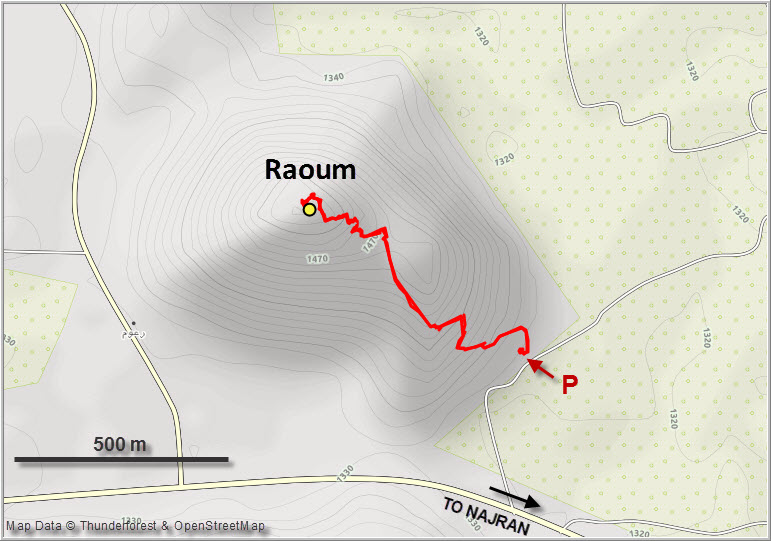
|
Elevation: |
1557 m (my GPS) |
|
Elevation gain: |
240 m |
|
Time: |
2.0 h |
|
Distance: |
2.3 km |
|
Difficulty level: |
Easy hike (Kane), T1 (SAC) |
|
Reference: |
No info was available to me prior to trip |
|
Personal rating: |
3 (out of 5) |
NOTE: This GPX track is for personal use only. Commercial use/re-use or publication of this track on printed or digital media including but not limited to platforms, apps and websites such as AllTrails, Gaia, and OSM, requires written permission.
DISCLAIMER: Use at your own risk for general guidance only! Do not follow this GPX track blindly but use your own judgement in assessing terrain and choosing the safest route. Please read the full disclaimer here.
